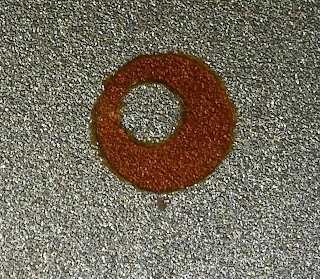Last year I bought a Mooshimeter wireless 2-channel multimeter. It is a multimeter front end that links to your mobile phone with Bluetooth and displays the results in an app.
It is handy because you can read it remotely, it can measure voltage and current simultaneously and display power, it can log to an SD card and graph the results. It can also speak the results.
Despite all these good features my "go to" multimeter is still my EEVBlog branded Brymen BM235. So my Mooshimeter sits in a drawer for most of its life. When I get it out it usually wants to do a firmware update, which needs fresh batteries. Because it has no off switch the best you can do is put it into shipping mode. It still flashes its LED occasionally, so the batteries run down over a period of several months and are then not up to doing a firmware update.
Devices with no proper off switch are a pain if you only use them rarely because the batteries are always flat when you come to use them. This is particularly a problem because modern Duracell batteries seem to leak and corrode as soon as they are flat. This didn't used to be the case. I found some very old ones that I had abandoned in outdoor devices that I expected to be corroded to hell but in fact they were not corroded at all, despite being well past their use by date. In contrast I have had many corrode recently that were flat, but still well within their use by date. I have stopped buying Duracell and now use Costco's own Kirkland branded ones. It is too early to say if they corrode or not.
So I normally remove the batteries from devices I use rarely but with the Mooshimeter this involves removing the casing that is held together by two screws. I decided to add a switch to it but it has a cat III safety rating and cutting a hole in the case would void that.
I had two ideas to get around this: the first was to put a normally closed reed switch in series with the batteries and 3D print a cradle with a magnet in it to turn it off. My second idea was to use a mercury tilt switch to turn it off when placed upside down. I ordered both but as the mercury switches arrived first I implemented that and it works well.
I decided the easiest point to break the battery circuit was the link between the two cells. For some odd reason that is a copper fill rather than just a track. It is on the top side of the PCB so I had to desolder one of the contacts to get at it. Fortunately the battery contacts have thermal relief connections so I just cut two of those to isolate the pad.
I then made an insulating washer out of Kapton film. I used that because it is very thin and can handle soldering temperatures. I stamped it out with a hole punch but I found it very difficult to get the hole concentric. This is my third attempt that was just good enough:
And here it is in place:
I reinserted the clip over the top and resoldered it. I then soldered the tilt switch between the two now isolated battery terminals.
When upright the contacts are bridged by the mercury, which is very low resistance. When I turn it upside down the mercury flows to the top of the bulb and isolates the batteries.
So all I have to do is remember to place it upside down in its case. If you want to attach the meter to something moving then the reed switch idea is the one to go for. I think it can probably be mounted in the same place if you use a neodymium magnet. You can get it nearer the back of the case by mounting it on the other side of the PCB but I don't know if that affects clearance distances for class III.
Friday, 16 June 2017
Subscribe to:
Comments (Atom)







